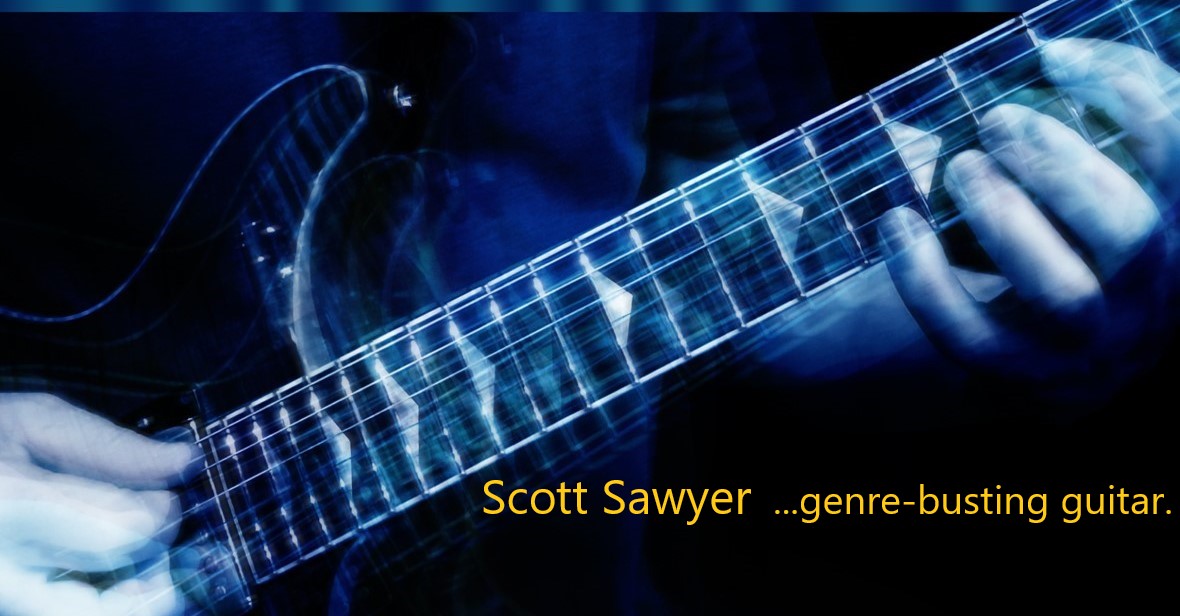Scott Sawyer
Night Visions
Doll Records, 2020
By Jim Dixon
May 31, 2020

https://medium.com/@88dixon/first-listen-scott-sawyers-night-visions-1866963bfd82
Here’s one you would probably miss in a blindfold test. A noir jazz album that sounds like it might have emerged from the Brooklyn jazz scene. Or maybe Chicago…or Seattle, or San Francisco? Perhaps a group of 20-something or 30-something musicians?
Night Visions comes from the North Carolina jazz scene, though the players all took different routes to end up there. Their bios are peppered with performance and recording credits for heavyweights like Dizzy Gillespie, Sonny Rollins, Mose Allison, and Sonny Fortune. Bandleader and guitarist Scott Sawyer, who composed all the music here, has been playing jazz and other styles professionally since the early 1980s, but aside from his work with singer Nnenna Freelon, he has had limited national exposure.
Sawyer has thoroughly absorbed the modern and post-modern jazz guitar traditions, from fundamentals laid down by Wes Montgomery and Jim Hall to the developments of the players like John Abercrombie and John Scofield who later set the pace. He’s got an exquisite touch and shares with Kurt Rosenwinkel the ability to dial in an elegant and warm electric guitar tone that doesn’t highlight signal-processing effects.
All that said, Sawyer would probably point out that he’s not making a “jazz guitar record” here, he’s just making a jazz record. Night Visions is his first full-length jazz album since 1992, though he’s released a couple of jazz-adjacent albums in the interval. It’s a mature and focused set, played with a quartet featuring tenor saxophonist Dave Finucane as Sawyer’s primary foil.
Finuncane, who early in his career was a part of the Boston avant-garde big band Orange Then Blue, ended up in North Carolina after 20 years on the New York jazz scene. Together, Sawyer and Finucane might remind listeners of two well-known guitar/tenor sax partnerships from recent decades, those of Kurt Rosenwinkel with Mark Turner, and John Scofield with Joe Lovano. Finucane’s burnished tenor tone has something in common with the sounds of Turner and Michael Blake, all of them eschewing the thinner and brighter jazz saxophone sounds fashionable from the 1970s through the 1990s. Finucane weds a particularly rich and smoky 50’s-Lester-Young tone to a post-bop jazz language.
The rhythm section — Ron Brendle on acoustic bass, and the crackling percussion of former Sonny Rollins drummer Kobie Watkins — gives the session a depth one might not expect from a self-published release like this. Sawyer likes to write slightly angular and playful tunes, like the Monk-ish “Biz” and twisty blues “Tripper”, and Watkins levitates these pieces with a swinging style that catches and prods the soloists in the tradition of drummers like Tony Williams and Elvin Jones. No thundering drum showcases here, but plenty to chew on when focusing on rhythm. Sawyer’s “Via” (a tribute to the late David Via, Sawyer’s regular drummer during the 1980s and 1990s) is a bit of a drum feature, and therefore a good track for listening to Watkins, but it’s far from the only track where he catches your attention. The sound engineering and production by Jason Richmond and the relatively open soundscapes Sawyer’s tunes allow the drums to play a truly equal role in the music.
At the heart of the album are a handful of ballads (“Passage,” “Safe,” and “To Be Determined”) that draw on the moody aesthetics of Wayne Shorter, Bill Frisell, and even Bill Evans, giving the record some of its most affecting moments. “Safe” in particular joins a haunting melody to a deep, minimalist bass groove (Brendle’s love of Charlie Haden’s perfectly-chosen notes is apparent here) and a melodic drum part that becomes as central as the guitar and saxophone parts as the song unwinds.
Balancing out the ballads and the post-Ornette bop are a couple of blusier, mid-tempo pieces that sound like soul-jazz with a post-modern twist. “Blue Lounge” starts with a deliberately lumbering back-beat and has the simplicity of Kenny Burrell’s classic “Chitlins Con Carne”, but the dirtier guitar tone and the caveman rhythms evoke some of the tunes of Bill Frisell’s early-1990s partnership with drummer Joey Baron. “Crawl” is another earthy tune, a gospel-tinged cousin of Peter Erskine’s “Sweet Soul” from the second Bass Desires album, with some choice soul guitar fills that show that Sawyer’s vocabulary extends beyond the bebop tradition. Listening to “Crawl”, it struck me that it would have been interesting to hear this band transform a rock or soul classic, the way that Michael Blake’s Slow Poke quartet re-imagined the Rolling Stones’ “Shine a Light” on its Redemption album.
The album should satisfy fans of musicians like John Medeski, Frisell and Scofield who mix a dash of the avant garde into accessible and catchy tunes that typically get the job done seven minutes or less. It’s real jazz, but it wouldn’t clear out a coffee shop if you played it over the house speakers.
* * *
Jim Dixon is a writer living in San Francisco. Night Visions is available through Bandcamp)
